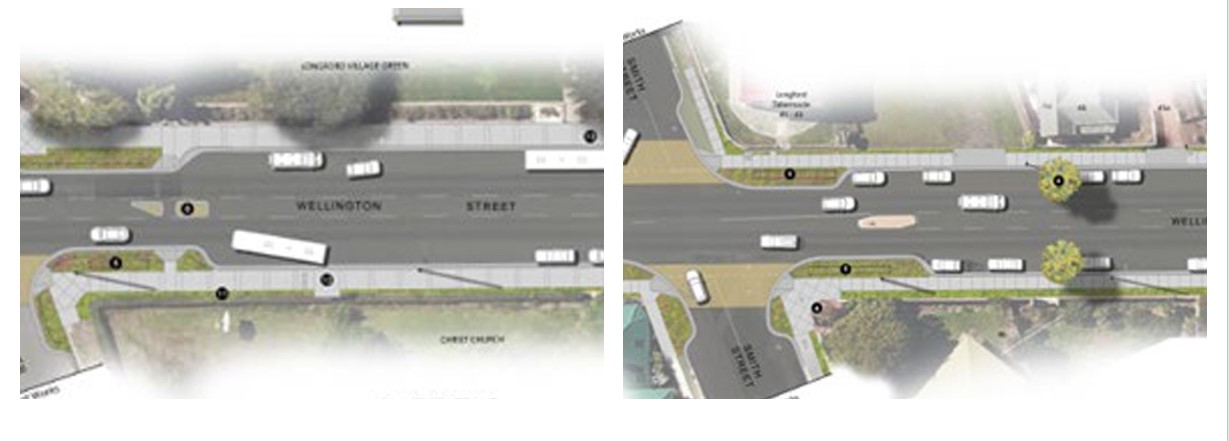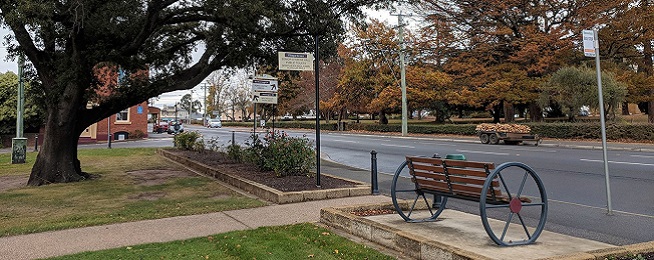Tractors and bicycles might not seem like the likeliest of bedfellows but in Longford they were natural allies last week at a protest against plans to narrow the main street between William and Union streets.
Farmers and riders got together last Tuesday to gather support for their opposition to the Northern Midlands Council’s $8.2 million plan to build kerb bulbing, new footpaths and pedestrian refuges on Wellington Street.
The council had considered the works at its 18 July meeting but decided to defer its decision to the following meeting on 15 August after receiving submissions against the works.
The deferral also recognised that the council’s newly formed Bicycle Advisory Committee was soon to meet for the first time and should be asked for advice.
The bicycle committee met on 3 August and has recommended to the council:
"That the kerb outstands (pinch points) incorporate ridable/mountable kerbing or, designated bike lane within the kerb outstands, this can be in the same line as the outstand or bend in towards the existing kerb line. Pavement or kerbing to be marked green with the appropriate signage."
Plans create pinch-points
The council has proposed to extend the kerb into Wellington Street, replace footpaths and place pedestrian refuges in the middle of the lanes, narrowing the available lane space.

Local cyclist Michael Morris helped organise the protest and spoke at the 18 July meeting because he is concerned that cycling safety will be affected.
“The proposal narrows the effective carriageway for cyclists and vehicles, where currently there is sufficient room for a vehicle to pass a parked car and cyclist safely that will no longer be the case should the development application proceed.
“The cyclist will therefore need to use the main carriageway and consequently hold up traffic for the entire length of this development. While technically a legal manoeuvre, we all know that a cyclist travelling at 15 to 20 km an hour holding up traffic for the length of this development is going to be a recipe for accidents, disharmony and road rage.
“While the main carriageway may not have been decreased, the effective carriageway, that is the distance from a parked car on one side of the road to a parked car on the other side of the road, most certainly has been decreased and this is the critical distance after all.
“The suggestion of using alternative routes or subsidiary roads is frankly laughable. How does a cyclist access the library and those private residences fronting Wellington Street use alternative routes,” he asked the council.

The street plans show physical pedestrian refuges in the median near the kerb bulbing so vehicles would have to wait behind people riding before they could pass.
Wellington Street is part of the state roads system and the speed limit is 50 km; the estimate of traffic volumes is over 24,000 vehicles a day, with 15% of those heavy vehicles.
The Northern Midlands Council released a statement about the works in which it addressed rider and farmer concerns:
“The road width is not affected and does not impact on other use for example heavy vehicles and cyclists.
“As per the road rules, bicycle riders are permitted to use the whole lane on roads with lane markings and ride two abreast. They are also permitted to ride on footpaths and cross at pedestrian crossings.
“Council requested at its last meeting for the matter to be discussed at the Northern Midlands Bicycle Advisory Committee meeting with a further report to be provided to Council.
“Council will then consider any matters raised by the Committee and additional feedback from the Department of State Growth, State Roads.”


